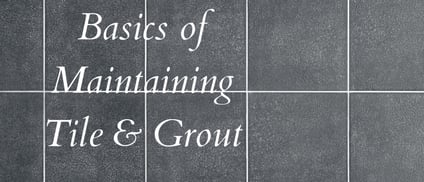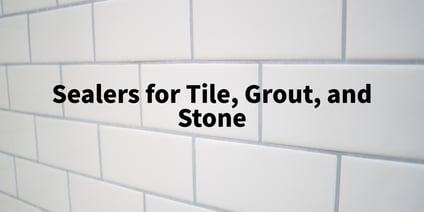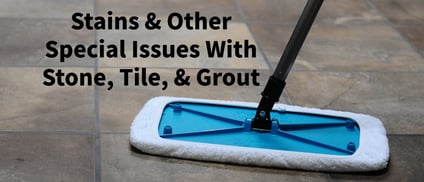Various acids like urea hydrochloride, phosphoric, citric, sulfamic, and glycolic are used wherever the removal of calcium carbonate and limescale is the primary concern. This removal is a high priority in the restoration cleaning of the cementitious grout which surrounds traditional ceramic and porcelain tile. Urea hydrochloride is preferred, as its performance in removing the sediments is significantly greater than the other acids. Some versions in the marketplace which use urea hydrochloride are very concentrated, as the acid exceeds the percentage of water.
These acids can corrode metal, and need to have corrosion inhibitors included in the formula. Cleaners also still need to mask off areas that can be damaged by acids like stainless steel appliances. Other ingredients, including solvency and surfactancy, assist the acid in this unique sediment removal process.
One requirement is that the acid comes into direct contact with the grout. This generally necessitates that the oily soils need to be removed from the grout so that the acid can come into contact with the grout. Alkaline grout cleaners serve this role perfectly as the blend of alkalinity, surfactancy, and solvency along with a high-pressure rinse will readily remove these soils. Sometimes the solvency and surfactancy in acidic formulations can accomplish this function alone.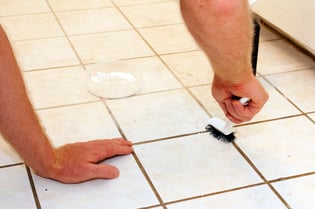
In precise terms, urea hydrochloride does not clean grout in the traditional sense. The resulting appearance is clean, but the process by which it happens is unique. The contact of the acid to the cementitious grout results in etching which reveals a lower layer of the grout not previously exposed to the surface. Aggressive brush agitation assists this process immeasurably.
The etched layer is rinsed away, but the acid that penetrated into the substrate of the grout needs to be neutralized by an alkaline. Typically the same pre-spray used to start the process can be applied over the grout lines and rinsed away by the same high-pressure rinse after a few minutes of dwell time. In essence, after all of the appropriate steps, the grout is renewed.
Years ago, I got a call from a cleaner who claimed that his acid of choice did not work like in previous batches since it did not effervesce upon contact. A detailed discussion revealed that this cleaner only used the acid and that they never neutralized it with an alkaline. I concluded that the acid over time had neutralized all of the calcium carbonates in the grout which resulted in no chemical reaction. The cleaner significantly weakened the grout gradually by not neutralizing the acid.
Another use of urea hydrochloride is to remove efflorescence. Efflorescence is the natural movement of mineral salts caused by moisture in cementitious grout and appears as a white, chalky substance on the surface of the grout. It can also appear on the surface of a porous stone-like slate. An acid surface treatment is the most complete method for removal. Spray the acid lightly on a small section of grout (a tedious task at best), brush vigorously, and quickly extract with an alkaline rinse. The alkalinity is necessary to neutralize the acid. However, this process of removal does not prevent efflorescence from happening again.
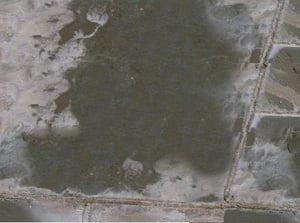 The presence of water causes efflorescence, and is the primary reason solvent-based sealers are preferred when used on colored grout.
The presence of water causes efflorescence, and is the primary reason solvent-based sealers are preferred when used on colored grout.
I vividly remember a call from a prison who had just sealed 6000 sq. ft. of newly installed black grout with a water-based sealer. They were asking what caused the white haze on the surface of the newly sealed black grout. Unfortunately, they learned about how they needed to use a solvent-based sealer on dark grout. The white haze is not noticed on the white grout.
Urea hydrochloride can be formulated into an excellent chemical whenever grout needs significant restoration. It generally requires a three-step process to complete the job properly. The extra effort requires a higher cost than normal cleaning with an alkaline pre-spray only. Its use in removing efflorescence can also be tedious in the amount of time involved. This application requires as much finesse as power.
Enjoyed reading this post? Read the following articles:
Featured Products
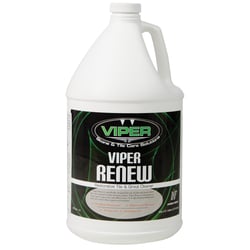
Hydro-Force, Hard Surface Cleaner, Viper Renew Restorative Tile & Grout Cleaner, 1 Gallon
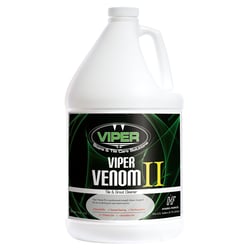
Hydro-Force, Viper Venom II Tile and Grout Cleaner, 1 Gallon
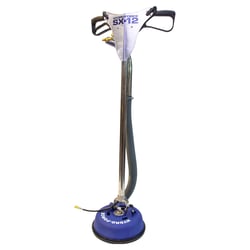
Hydro-Force, SX-12 Hard Surface Cleaning Tool


